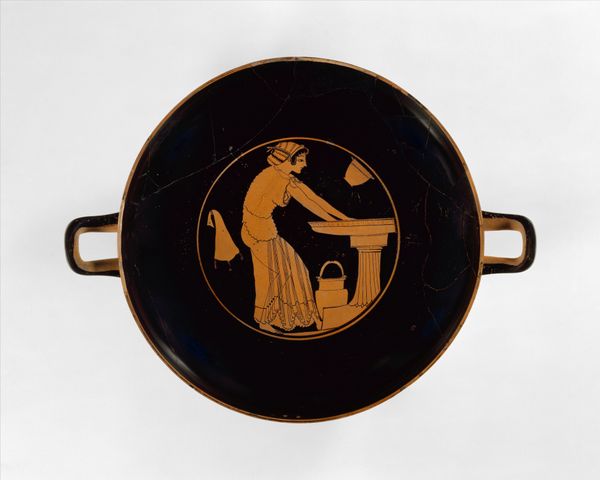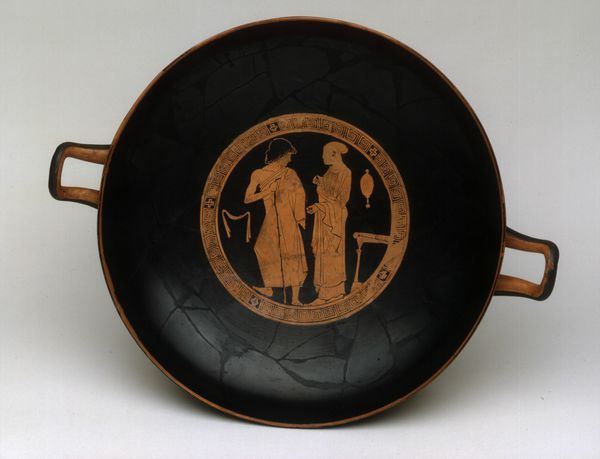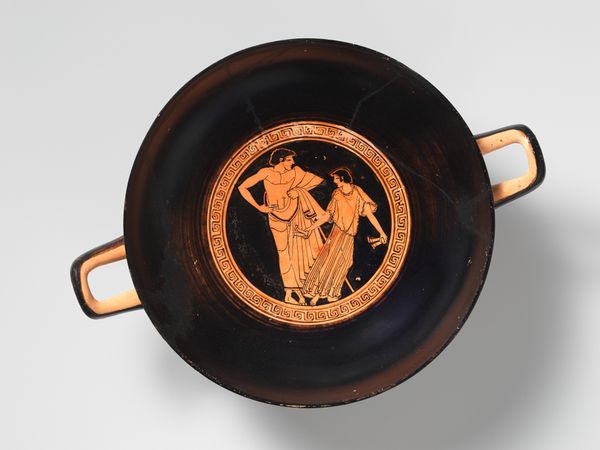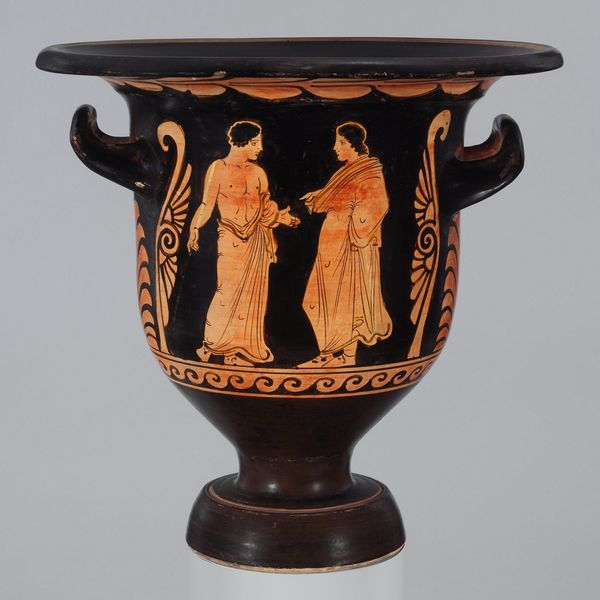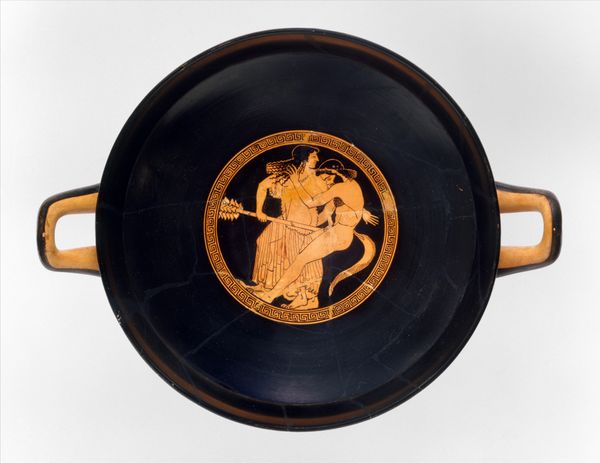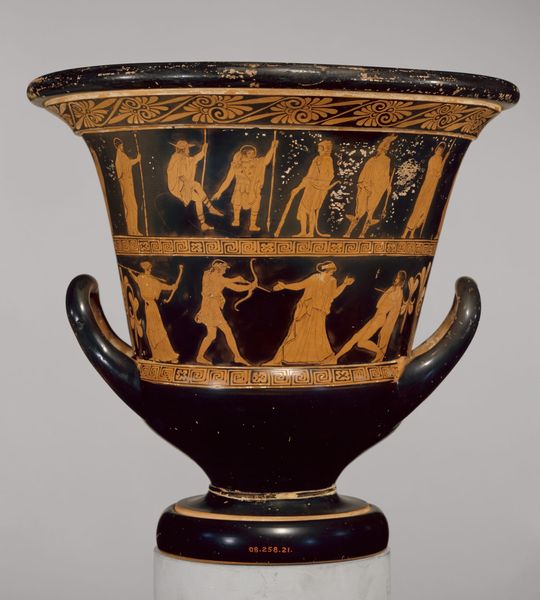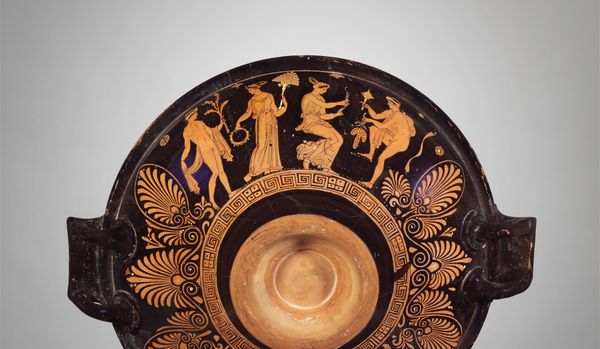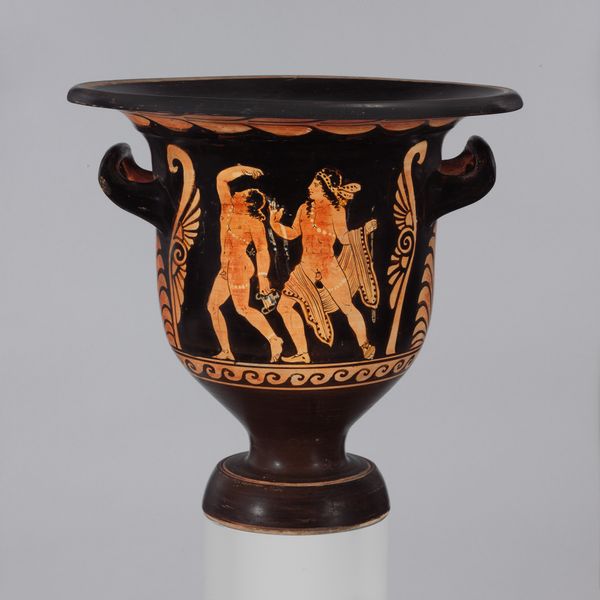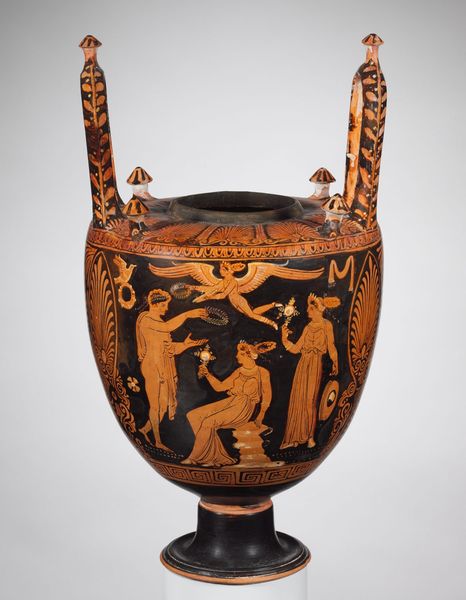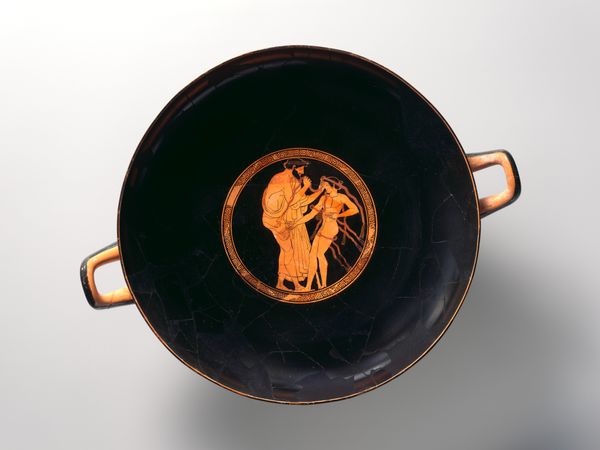
ceramic
#
narrative-art
#
pottery
#
greek-and-roman-art
#
ceramic
#
figuration
#
ancient-mediterranean
#
genre-painting
#
history-painting
Copyright: Public domain
Curator: Here we have a terracotta plate dating back to 510 BC. It's a striking piece currently housed in the Metropolitan Museum of Art. Editor: Immediately, the stark contrast grabs you, doesn't it? The figures almost seem suspended in the blackness, like actors on a dimly lit stage. It evokes a kind of silent drama. Curator: Absolutely. That contrast is key to understanding the visual language of ancient Greek pottery. The black-figure technique, which we see here, relied on silhouettes and incised details to bring narratives to life. What story do you imagine is unfolding? Editor: I see tension. One figure seems to be gesticulating wildly, perhaps arguing a point or making an impassioned plea. The other appears more defensive, his body coiled, as if bracing for impact. It's wonderfully ambiguous. Curator: Narrative ambiguity was, in many respects, the point. These vessels served a function—plates, drinking cups, storage—but they also served as a canvas for stories, myths, and scenes from everyday life. They captured a moment, a frozen gesture, inviting the viewer to fill in the gaps and contemplate human drama. Editor: There is such enduring appeal in this technique. The black acts like a void which allows the ochre to jump off the piece as if lit from behind. It’s remarkably modern, in a strange way, don’t you think? Curator: Definitely. This ceramic artwork embodies both artistry and practicality. It gives us such a strong glimpse into how the Ancient Greeks valued aesthetics even in commonplace objects. Editor: For me, this piece is such an evocative little tableau. A glimpse of history that resonates with the dramas we all navigate today. Curator: Agreed. The vessel's purpose gives a connection with past lives lived while the painted image gives us such a vibrant narrative—it truly enlivens what we would normally only find in text.
Comments
No comments
Be the first to comment and join the conversation on the ultimate creative platform.


